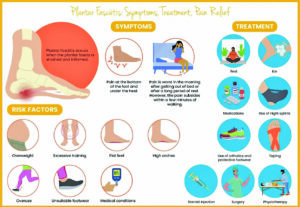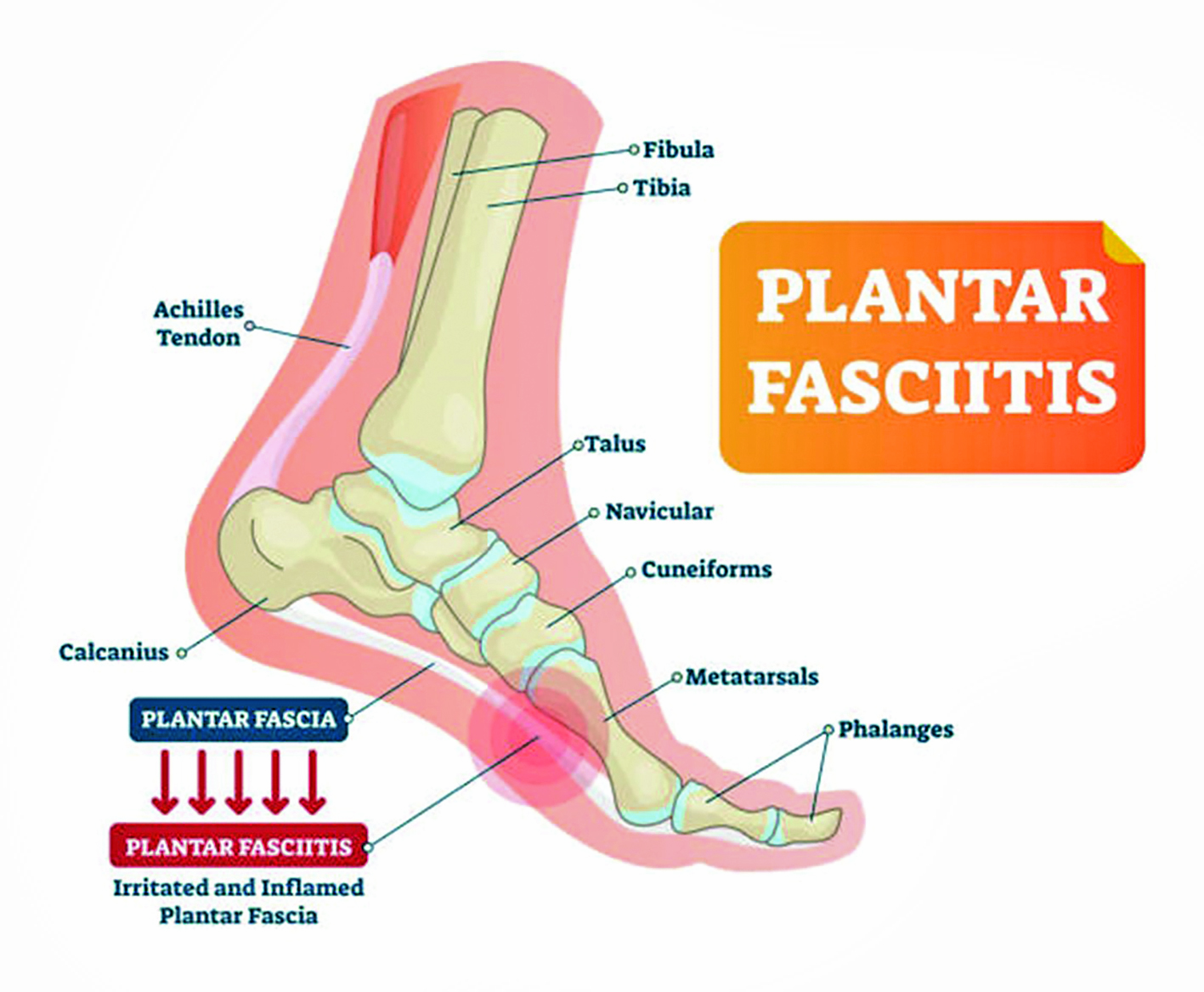 A large number of our population suffers from heel pain. Often, the underlying cause goes misdiagnosed due to lack of medical attention. Let’s explore the issue of heel-pains which can be extremely debilitating and even greatly restrict one’s mobility.
A large number of our population suffers from heel pain. Often, the underlying cause goes misdiagnosed due to lack of medical attention. Let’s explore the issue of heel-pains which can be extremely debilitating and even greatly restrict one’s mobility.
The causes of heel pain can manifold – some of the clinical names of these include: Plantar Fasciitis (Inflammation of the tissue in the foot); Retro Calcaneal Bursitis (Inflammation of a fluid sac behind your heel bone); Nerve Entrapment; Stress Fractures (Tiny cracks in your heel bone); Rheumatoid Arthritis; Haglund’s Deformity (Bony spurs in the heel bone); and Fascia Rupture. The most common one is Plantar Fasciitis, which we will discuss in detail.
WHAT IS PLANTAR FASCIITIS?
Plantar Fasciitis is the inflammation of the tissue of your foot. The plantar fascia is a strong, fibrous attachment that runs from your heel to the ball of your foot and your toes. It’s stretchy, like a thick rubber band. The plantar fascia connects the bones in your foot together and forms the arch on the bottom of your foot. When this tissue gets inflamed due to overuse or injury, it causes pain in the sole and heel of the foot.
CAUSES OF PLANTAR FASCIITIS
Age: Those in the 40 to 60 years’ age group have a higher predilection.
Certain Types of Exercise: Activities that place a lot of stress on your heel and attached tissue such as long-distance running, ballet dancing and aerobic dance can contribute to the onset of plantar fasciitis.
Foot Mechanics: Flat feet, a high arch or even an atypical pattern of walking can affect the way weight is distributed when you’re standing and can put added stress on the plantar fascia.
Obesity: Excess kilos put extra stress on your plantar fascia.
Occupations That Keep You On Your Feet: Factory workers, teachers, surgeons and others who spend most of their work hours walking or standing on hard surfaces can be at increased risk of plantar fasciitis.
Autoimmune Disorders: Rheumatoid arthritis patients commonly suffer from heel pain.
SYMPTOMS OF PLANTAR FASCIITIS
– A burning pain is suggestive of a nerve entrapment issue, throbbing(pulsatile) pain can be due to an infection in the underlying bone.
– Dull aching pain which usually starts with the first step in the morning is due to plantar fasciitis.
– Pain during walking after prolonged rest is seen in rheumatoid and other arthritic conditions. Pain at night during rest could be due to tumors, nerve related, or infections.
– Pain on thumping the heel to the ground could be due to a stress fracture or old fracture of the calcaneum (heel bone).
A detailed evaluation is done by the orthopaedician regarding the same, one should not try to self-diagnose.
MANAGING HEEL PAIN
Depending on the underlying suspicion of diagnosis, you may be asked to undergo X-rays, USG (sonography), MRIs or EMGs (nerve study), as deemed fit. The usual treatment protocol may vary depending on the severity and clinician’s protocol, but usually includes:
Activity Modification: Reduce or stop the activities causing excessive strain on your plantar fascia
Weight Loss: Decreasing weight reduces the strain on the heels
Medications: Simple analgesics can be taken for a short period of time till the period of intense inflammation tides over.
Physical Therapy: Plantar fascia stretching exercises can do a world of good
Warm/Cold Fomentation: Taking warm water fomentation by immersing your heels in lukewarm water twice daily can help. Some prefer to ice it. It is better to use cold fomentation in the initial stages of the inflammation and warm fomentation later on.
Footwear Modification: Wearing soft, silicone insoles or soft footwear, arch support soles can help in cases of flat-foot.
Night Splints And Taping: These are worn at night which stretch the plantar fascia, effectively decompressing it. Taping helps by changing the way forces act on the sole while weight bearing.
Ultrasound Therapy, Tens (Transcutaneous Electric Nerve Stimulation) can be given a period of trial.
Some surgeons prefer giving intralesional steroid injections into the fascia. Almost 80-90 per cent of the patients can be managed with non-operative management, however one should keep in mind that recovery can take up to 6 months at times. Surgical interventions are as a last resort and involve plantar fascia release and decompression.
In my experience, most of the heel pain due to plantar fasciitis can be managed with simple measures such as warm fomentation, footwear modification, weight loss and physiotherapy. The therapy has to be targeted according to the underlying cause and it can be a slightly long process in some for complete recovery, but I guess this is why the term ‘patient’ was coined for patients!
[Disclaimer: The contents of this article should not be considered as formal medical advice. Kindly visit your orthopaedician for any related treatment.]
- ઝેડએકેઓઆઈએ દરેમહેર માટે પ્રોપર્ટી ખરીદી - 27 July2024
- Insightful Annual Seminar By WZO - 27 July2024
- WZCC Pune Organises Member’s Night - 27 July2024
